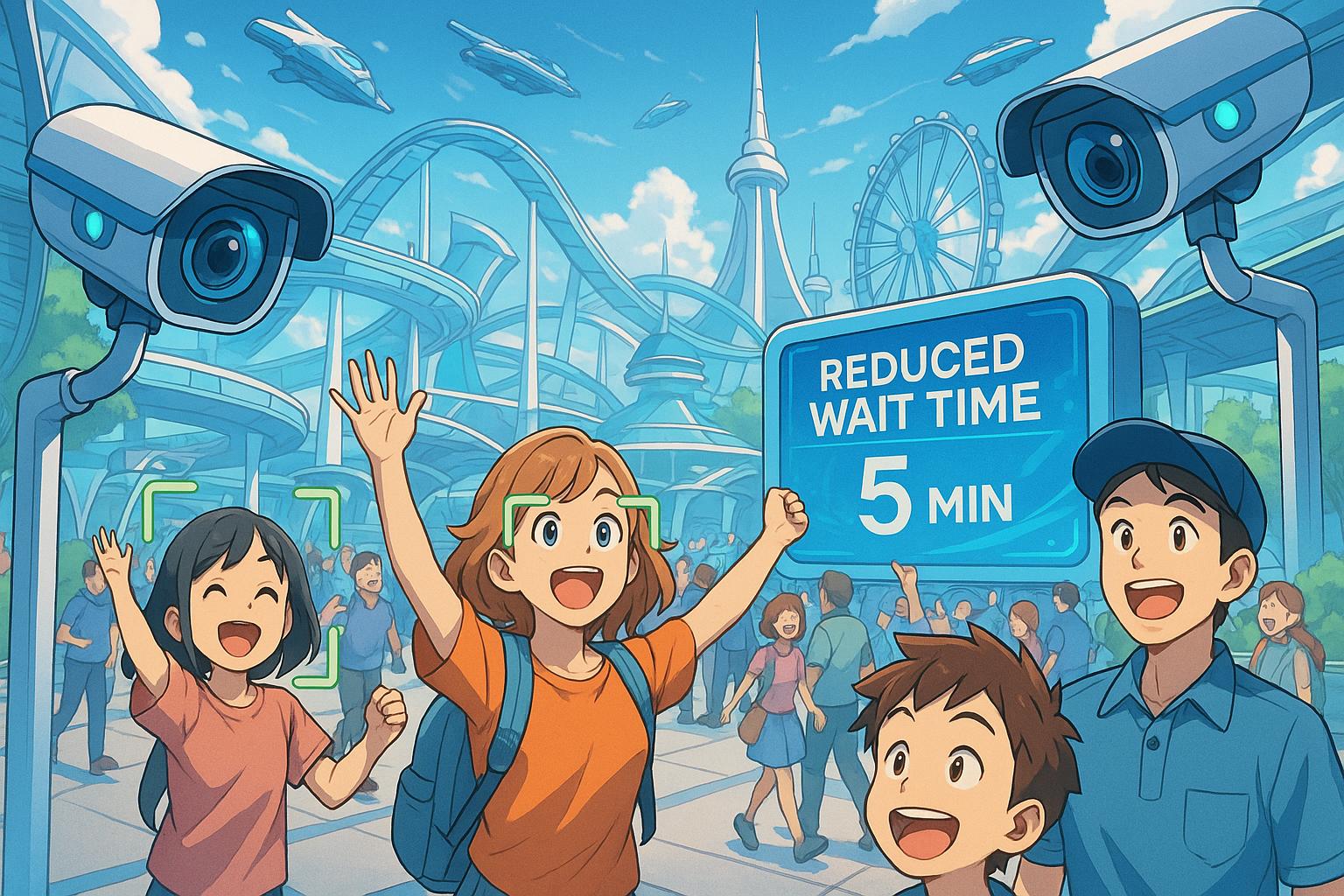Theme parks like Legoland are using Vision AI to track real-time visitor flow and optimise ride operations, reducing queues by up to 40% and transforming the guest experience through data-driven insights and personalised services.
As theme parks strive to enhance guest satisfaction, the integration of artificial intelligence (AI) is set to transform the landscape of visitor experiences by significantly reducing wait times. Traditionally plagued by long queues that often frustrate visitors, theme parks are now beginning to leverage advanced technologies to foster a more efficient flow of guests, improving overall enjoyment and operational effectiveness.
AI technologies are ushering in a new era for theme parks by analysing visitor behaviour, optimising ride operations, and tailoring guest experiences. For example, data-driven insights are now enabling parks to better understand peak demand periods for attractions, which allows for more strategic staffing and resource allocation. This shift is not merely theoretical; studies indicate that AI could potentially reduce operational costs by 23% and improve maintenance efficiency by 36% in theme parks, thus driving innovation in guest services and park management.
One of the most notable technologies being adopted is Vision AI, which employs advanced cameras and analytics to provide real-time insights into ride statuses and guest flow. By monitoring queue dynamics, parks like Legoland are able to preemptively identify issues and adjust operations accordingly, thereby minimising downtime. Speaking to industry experts at recent discussions, there’s widespread agreement that the move from traditional manual tracking to this visionary technology marks a significant leap in operational efficiency, allowing parks to react in real time to fluctuating guest numbers.
While AI applications hold promise for enhancing visitor experiences, they also raise questions about data privacy. As parks increasingly track visitor movements and patterns, robust mechanisms for transparency and security will be essential to maintain guest trust. The evolution of these systems may lead to advanced queuing experiences and personalised marketing strategies, ultimately cementing a commitment to a more customised visit for each guest.
Case studies like Legoland highlight how AI can dramatically improve the guest experience. Adrian Thompson, operations transformation director for Merlin Entertainments, states that integrating Vision AI allows for immediate responses to visitor data anomalies. Reducing wait times not only heightens guest satisfaction but also encourages repeat visits, with a reported 40% decrease in waiting periods for key attractions in some parks.
In addition to ride efficiency, AI-powered applications are evolving to include features that assist guests in planning their park visits. By providing up-to-the-minute information on wait times and crowd levels, these tools facilitate more strategic decision-making for visitors, allowing them to maximise their day at the park.
Moreover, the future of AI in theme parks appears promising, with ongoing developments expected to provide even more personalised experiences. Advanced virtual agents and self-service options are already in use at parks like Six Flags, which utilises Google Cloud’s Dialogflow CX to field customer inquiries and enhance satisfaction rates, achieving an impressive contact deflection rate of 55%.
Despite the advantages of AI integration, challenges remain, particularly in ensuring the ethical use of visitor data. Theme parks will need to navigate the complexities of new regulations and public concerns regarding privacy as they implement these cutting-edge technologies into their operations.
Ultimately, the adoption of AI in theme parks signifies a fundamental shift towards a more efficient and enjoyable visitor experience, marking a concerted effort to prioritise guest satisfaction over the frustration of lengthy wait times. As these technologies continue to advance, they promise to redefine what a day at the theme park entails, ensuring that the magic of these attractions is experienced fully rather than interrupted by unnecessary delays.
 Reference Map:
Reference Map:
- Paragraph 1 – [1], [2]
- Paragraph 2 – [4], [6]
- Paragraph 3 – [3], [5]
- Paragraph 4 – [1], [3]
- Paragraph 5 – [4], [6]
- Paragraph 6 – [5], [6]
Source: Noah Wire Services
- https://www.disneydining.com/ai-is-about-to-dramatically-change-your-theme-park-wait-times-rl1/ – Please view link – unable to able to access data
- https://www.zipdo.co/research/ai-in-the-attractions-industry-statistics/ – This article presents statistics on the impact of AI in the attractions industry, highlighting that AI can reduce operational costs by 23% and improve maintenance efficiency by 36% in theme parks. It also notes that AI integration can reduce wait times by 40% at amusement parks, demonstrating the significant role of AI in enhancing operational efficiency and guest experience in the attractions sector.
- https://66degrees.com/66degrees_project/six-flags-optimizes-guest-services-support-with-ai-powered-virtual-agents/ – The article discusses how Six Flags implemented AI-powered virtual agents to address challenges in their customer support system. By utilizing Google Cloud’s Dialogflow CX, the system efficiently handled a significant portion of customer inquiries through self-service options and seamless handoffs to human agents, achieving a 55% contact deflection rate and enhancing overall customer satisfaction.
- https://dexibit.com/iaapa-tech-panel-operational-efficiency-with-data-and-ai/ – This article highlights a discussion on operational efficiency in theme parks through data and AI at an IAAPA tech panel. It covers the transition from manual clicker counters to vision AI, with parks like LEGOLAND implementing live camera feeds to monitor ride loading and queue dynamics, leading to improved operational efficiency and guest experience.
- https://www.rh1.co/post/smart-operation-solutions-for-theme-parks – The article explores smart operation solutions for theme parks, including the integration of AI dashboards for real-time monitoring of rides, staffing, and guest flow. It also discusses AI-powered visitor insights for personalized marketing, automated guest services like chatbots and self-service kiosks, and contactless transactions to enhance operational efficiency and guest satisfaction.
- https://adamwalsworth.com/ai-in-theme-park-management-improving-operational-efficiency/ – This article examines how AI enhances operational efficiency in theme park management. It discusses the use of AI algorithms to predict crowd formations by analyzing historical data and real-time information, allowing park managers to adjust staffing levels and ride operations accordingly, thereby improving guest satisfaction and reducing wait times.
- https://www.assertai.com/how-computer-vision-slashed-wait-times-by-30-at-a-leading-resort/ – The article details how Assert AI’s computer vision solution was integrated into a resort’s existing CCTV cameras to monitor queue lengths and customer wait times in real-time. This system led to a 30% reduction in wait times, improved operational efficiency, and enhanced the overall guest experience by enabling prompt responses to high-traffic areas.













